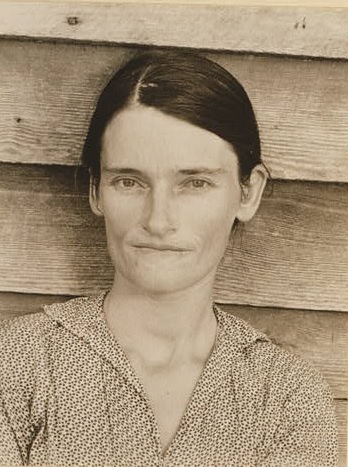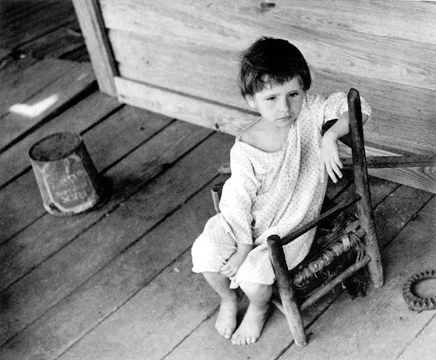Let Us Now Praise Famous Men
What do you feel or think when you see this photograph? A child is sitting in a brittle chair. She is wearing an oversize shirt and gazing at something that we don’t know exactly. It seems like she is imagining something. Near her, a used tin can was on the floor.
This photograph implies a hidden misery. She might be a child of an impoverished family, that is indicated by her oversize cloth. The used tin can might be used to contain the water from the leaking roof. Her eyes that are looking at something far away, makes me wonder ‘what is the future of this child?’.
This photograph is a part of the photo-essay book Let Us Now Praise Famous Men that first published in 1941. The creators of this book are Walker Evans–American photojournalist and James Agee–American writer.
This photo-essay book is unique. Evans’ photographs were printed separated from any text, including the captions and Agee’s text. The reader ‘is forced’ to see the photographs without any information about the place, time, subject, and even the page number.
After some pages of photos, the reader enters the first page–a book cover with the title Let Us Now Praise Famous Men. The next pages are book two which contains Agee’s text about the photographs.
Let Us Now Praise Famous Men

Let’s see another photo, a woman, might be a mother. Her face and smile suggest hidden suffering and anxiety. But, it is only a possibility, I can’t really enter her life.
The separated photographs from any text are, quoted from W.J.T. Mitchell–an American Media and Literary Theorist, “an ethical strategy, a way of preventing easy access to the world they represent”. (1994, p.295). Without captions or legends, we experienced an obstacle to entering the subject’s world. It forced us to feel and think about the subject, even feels what they feel. It is not only for the aestheticizing reason that seeks a ‘purity’ of each medium but an “ethical” strategy that will block any political aims or political propaganda (p.292, 293, 295).
In book two, Agee names the subjects in the photographs as George Gudger, Annie Mae Gudger, their house, and their children. However, these are only pseudonyms to obscure the identity of the family.
These photographs were created as documentary photographs of the Great Depression in America. The Farm Security Administration (FSA) assigned many photographers and journalists, such as Dorothea Lange, Arthur Rothstein and Walker Evans, to cover the disastrous impact of the Great Depression in tenant farmers’ families. The FSA project aims to support the New Deal programs that deal with the recovery from the Great Depression.
Let Us Now Praise Famous Men has significant impacts until today, not only as documentation of the Great Depression in America but also as an artwork that tells us about the struggle of families to live. It also inspires many photographers and writers to create artworks that are creative and have socio-political significance without being a propaganda apparatus.
Let Us Now Praise Famous Men by James Agee and Walker Evans

